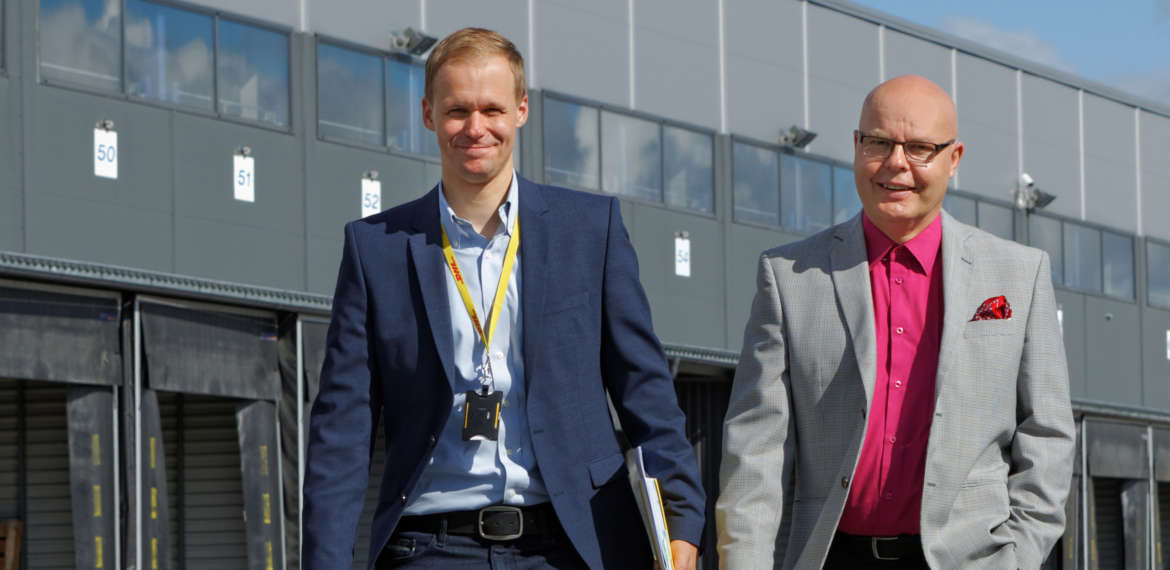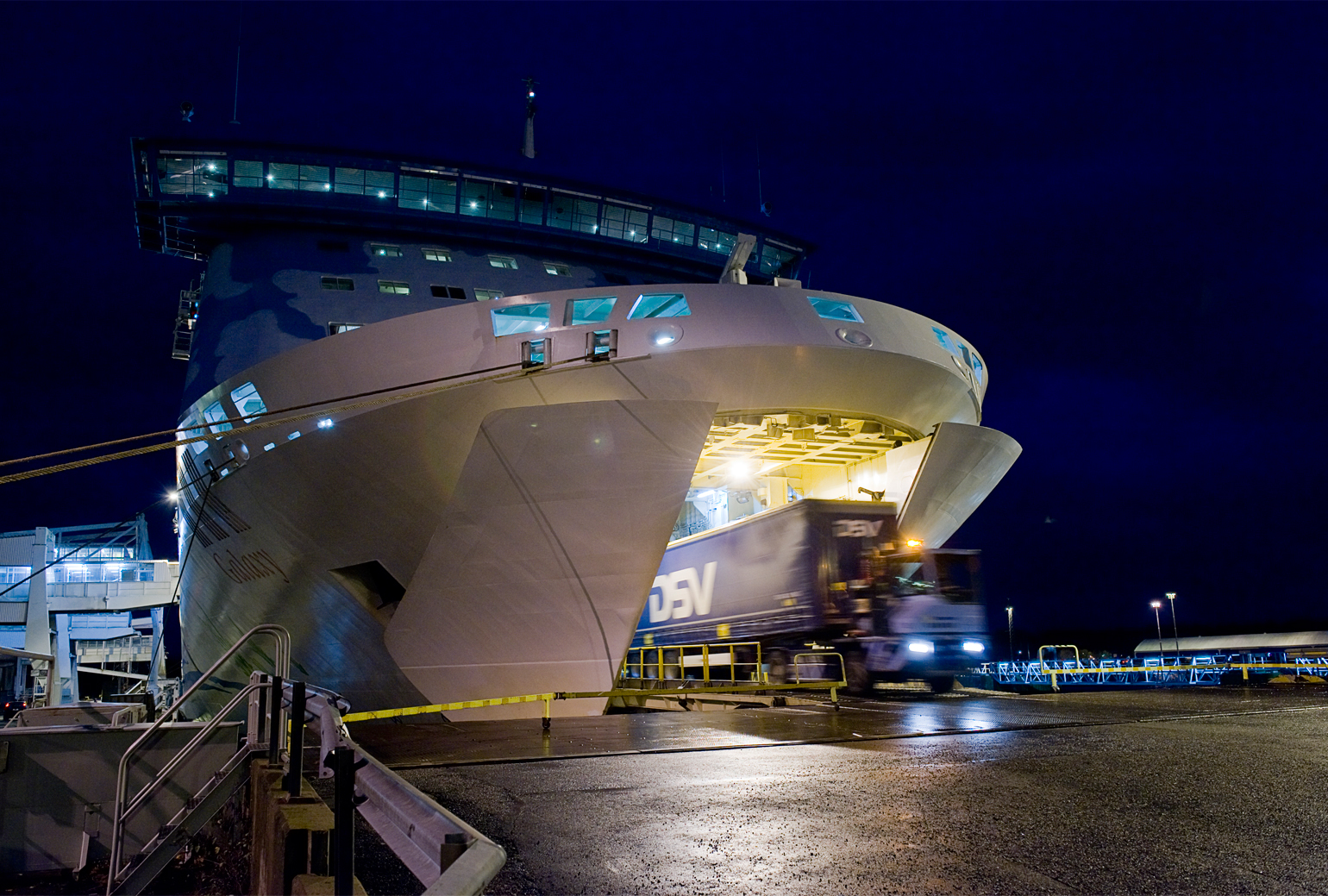The transport chain in Turku is trimmed for top speed
The Port of Turku offers the fastest sea route for truck transports to Sweden and the rest of Scandinavia. The crossing between Turku and Stockholm takes only eleven hours, and four daily departures allow for flexibility in the planning of transport schedules. In addition, Turku offers a competitive alternative, both in terms of speed and cost, to truck and trailer transports to Germany.

The fast and regular ferry services provide a strong foundation for the slogan of the Port of Turku: Because time matters. By offering our customers fast connections we help companies keep their wheels rolling. The industry will get the materials and parts they need on time, shops will get products to be sold, and private individuals will get their parcels on time.
However, maintaining a fast and efficient transport chain requires open and reliable co-operation both on land and at sea. This is the joint goal of all the players in the Port of Turku, i.e. shipping companies, port operators, and transport companies and, of course, the Port of Turku’s organisation.
Speed is the sum on many factors
“The sea route between Turku and Stockholm offers the best schedules and frequency for the general cargo transports between Finland and Scandinavia. The cargo capacity of the route also plays an important part in securing the fast transports of goods. At the moment the capacity is mainly sufficient, but more capacity will probably be needed when the domestic economy starts to recover. We estimate that an increase of 10–15 per cent in the goods transport volume would require two or three more weekly departures. Together with the shipping companies we will certainly be able to adjust the capacity to meet the requirements of cargo traffic”, says Olli Intonen, Area Sales Manager at Suomen Kaukokiito Oy.

The road connections to and from the port are also important for those responsible for domestic transports. Due to the clear traffic arrangements in the port and on the outbound roads it is easy to drive to and from the Port of Turku. Good road connections mean that the shipments can be forwarded quickly, and time need not be wasted on waiting around in the port or queuing in traffic jams.
“The completion of highway E18, the improvement and building of motorway portions for highway 8 as well as the widening of Suikkilantie into a four-lane road have further contributed to fluent and cost-efficient transports. The state financing granted for the improvement of the Turku ring road is also important for the connections to and from the Port of Turku. The financing makes it possible to start work on this road already in 2018”, Olli Intonen says.
Products distributed during the same day
The significance of speed is particularly emphasised in the turnaround times of the increased parcel transports, because parcel shipments from Sweden are delivered from the Port of Turku to the recipients considerably from other ports.
A 15-minute drive from the Port to the terminal gives an extra advantage when the time available for the unloading and documentation of goods is very short.
“In transports of general cargo, it’s crucial to process imported goods quickly and forward them to the customers. We have developed our domestic network so that the goods that arrive on ships from Sweden in the morning can be distributed to the Helsinki metropolitan area and Tampere during the same day. Expanding domestic general cargo deliveries toother destinations in the mornings requires large enough volumes to make it financially viable”, Olli Intonen explains.
“As a new feature we have observed the need for an even faster system to get the imported products distributed in the Turku, Helsinki and Tampere regions during the same afternoon. This can be done by using the Port of Turku, because it only takes about fifteen minutes to drive from the port to our terminal, and there are good connections to all main roads from the terminal. Speed is becoming more and more important, and therefore the Port of Turku offers a good alternative to Vuosaari also for transports going to the Helsinki metropolitan area. Our terminal in Turku has the capacity and resources to take care of the handling and distribution of even larger volumes of cargo cost-efficiently”, Olli Intonen says to those responsible for import transports.
Co-operation results in more efficient services
“To be able to keep the promise of speed, co-operation within the transport chain is extremely important. The single most important factor is adjusting the schedules of international traffic arriving in the port to the schedules of the domestic services. Due to the long distances in Finland, part of the domestic trunk traffic has to leave before the goods arriving on the evening ferry have been unloaded to the terminal. The same applies inversely to export shipments, in other words, part of the express routes in the morning arrive too late for the morning ferries. Our joint goal should therefore be to intensify the co-operation between the foreign and domestic drivers, so that we can make the schedules serve better the whole of Finland”, says Tuomas Ruohonen, Director, Nordic Traffic at DHL Freight (Finland) Oy.
Co-operation is also needed for the development of the documentation of transports, where the use of digitalisation plays a key role. The short period of time allowed for loading and unloading of goods in the terminals makes it necessary to have advance arrival notices in the terminals as EDI transactions.
“In practice it can be said that when information flows smoothly, the goods will do, too. Mobile technology has made many things easier, starting from the follow-up of cargo, but digitalisation makes many more things possible. Various added value services related to cargo transports can already be produced through electronic orders, for example, enabling anticipatory reacting to different disturbances. In the future, all of these will create more new solutions to improve the cost-efficiency, quality and productivity of transports and to avoid errors and overlapping operations”, Tuomas Ruohonen envisions.
Increasing speed is required on the changing markets
According to all forecasts, speed will have more and more significance in the Scandinavian traffic. The reasons for this include both the new, growing business areas and the urbanisation of Finnish society.
“The growing online retail business increases the volume of deliveries directly to consumers. In addition to low prices, the most important competitive advantages of international online retailers include fast deliveries achieved by careful measurement of the speed and performance of different transport routes. The Nordic countries form a uniform market area for large international players, and therefore their central stocks are often situated in Sweden. This strengthens the role of Turku as a natural hub for Scandinavian traffic, which can also be built into a bridgehead of online business and other parcel deliveries to consumers in Finland”, says Tuomas Ruohonen from DHL Freight.
According to Mr Ruohonen, the concentration of people and businesses in large growth centres also benefits the Port of Turku. All the most important growth centres can be reached from Turku, at least as quickly as from its competitor ports.
The speed resulting from Turku’s location gives the whole transportation chain strong competitive advantage. We should all stick to this, and we should think how we can best meet our customers’ expectations now and in the future – both for our own part and as a complete transport chain.
Port operator shares the opinions of cargo carriers

Markku Mäkipere, Managing Director of port operator Stevena, thinks along the same lines. The company operates in many ports in southwestern and southern Finland and considers speed to be the key strength of the Port of Turku both in import and export transports.
“Turku is such a superior location in the Scandinavian traffic that sometimes you wonder why truck and trailer transports are directed to Helsinki at all. It takes ages to get out from South Harbour, Katajanokka or West Harbour in Helsinki. In Turku, trucks and trailers need not queue and wait in the port for loading and unloading. Thus the turnaround time in the port is short, which speeds up the whole transport chain. As for conventional tramping, a ship’s call in Turku will easily save about 24 hours for the sea voyage, compared, for example, with the ports on the Gulf of Bothnia”, Markku Mäkipere says.
Thanks to a sufficient number of berths and efficient cargo handling services, ships need not stay in port very long. In terms of export transports, the closing and departure times in Helsinki and Hanko are often too early compared with the evening departures from Turku. Export products can be dispatched from Turku during the same day, even if the factory loads the goods at the end of the working day”, Markku Mäkipere from Stevena points out.
Text Kari Ahonen
Photos Markku Koivumäki
